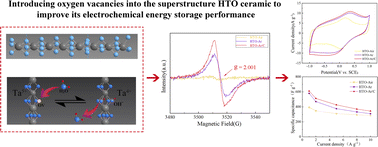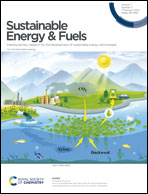A study of superstructure Hf6Ta2O17 ceramics for electrochemical energy storage applications†
Abstract
The vacancy theory was widely used in multi-element transition metal oxide systems for the development of high-performance energy storage materials, such as perovskites and pyrochlores. In this research, a series of superstructure Hf6Ta2O17 (HTO) ceramics with different oxygen vacancy (OV) contents and stable crystal structures were prepared as electrode materials to investigate the energy storage potential. All the samples exhibited good electrochemical performance and showed a clear positive correlation with the OV content. Among them, HTO–Ar/C achieved the highest specific capacitance of 610 F g−1 and a wide voltage window of 2 V at a current density of 1 A g−1. Based on the study of the crystal structure, OV content and electrochemical properties of HTO by the use of XRD, XPS, EPR and an electrochemical workstation, the OVs were confirmed to be the energy storage sites in our multi-element transition metal oxide system. Therefore, the electrochemical properties of HTO were mainly determined by the concentration of OVs in the crystal structure and the increase in the OV content could significantly improve the energy storage performance of HTO. The OV-rich superstructure HTO ceramic is proved to be a promising energy storage material and its properties can be further improved by appropriate doping as well as microstructural adjustment.



 Please wait while we load your content...
Please wait while we load your content...